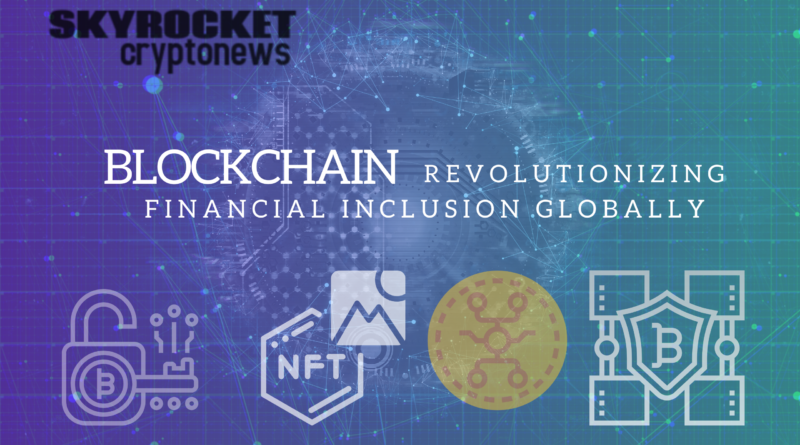How Blockchain is Revolutionizing Financial Inclusion Globally
Financial inclusion – the ability to access and utilize financial products and services – remains a significant challenge for billions of people worldwide. According to the World Bank, over 3.3 billion adults globally lack access to formal financial services. This exclusion disproportionately impacts underserved communities, particularly in developing economies, hindering their ability to save, invest, and build a secure financial future.
However, a revolutionary technology is emerging as a potential game-changer in the fight for financial inclusion: blockchain. Blockchain, the distributed ledger technology that underpins cryptocurrencies, offers a unique set of features that have the potential to transform how financial services are delivered and accessed.
Decentralization: Empowering Individuals
The principle of blockchain is decentralized nature. Unlike traditional financial systems which rely on centralized institutions like banks, blockchain operates on a peer-to-peer network. Transactions are recorded on a secure, distributed ledger accessible to all participants. This eliminates the need for intermediaries, empowering individuals to manage their finances directly.
For the unbanked and underbanked populations, this translates to increased accessibility. Without the requirement for a traditional bank account or credit history, individuals can participate in the financial system through their smartphones or even basic mobile devices. This opens doors to a range of services, including:
- Mobile wallets: Blockchain-powered mobile wallets provide a secure and convenient way to store and transfer funds. Users can receive and send payments without relying on traditional banking infrastructure.
- Microloans: Decentralized finance (DeFi) platforms built on blockchain can facilitate access to microloans. These platforms connect borrowers directly with lenders, bypassing traditional institutions and potentially lowering interest rates.
- Digital identity: Blockchain can be used to create secure digital identities for individuals. This can be particularly beneficial for those who lack formal documentation, allowing them to access financial services and participate in the formal economy.
Transparency and Security: Building Trust
Another key advantage of blockchain is its inherent transparency. All transactions on a blockchain network are publicly viewable and tamper-proof. This fosters trust and accountability within the financial system, reducing the risk of fraud and corruption. For individuals who have been wary of traditional financial institutions, this transparency can be a game-changer.
Furthermore, blockchain offers enhanced security through cryptography. Every transaction on the network is encrypted, making it virtually impossible to alter or forge. This protects users from financial crimes like identity theft and unauthorized access to their funds.
Efficiency and Cost Reduction: Streamlining Transactions
Traditional financial transactions can be slow and expensive, particularly for international payments. Correspondent banking, the system used by banks to transfer funds across borders, often involves multiple intermediaries and hefty fees.
Blockchain offers a faster and more cost-effective alternative. Transactions are settled almost instantaneously on a blockchain network, eliminating the need for intermediaries and reducing processing times. This can significantly benefit migrant workers sending remittances back home or small businesses engaging in international trade.
Real-World Examples: Blockchain in Action
The potential of blockchain for financial inclusion is not just theoretical. Several initiatives around the world are already demonstrating its real-world impact:
- Kiva: A non-profit organization is leveraging blockchain to provide microloans to underserved communities in developing countries. The platform allows for more efficient loan disbursement and tracking while fostering transparency and accountability.
- World Food Programme (WFP): The WFP is exploring blockchain to deliver food assistance to refugees. Blockchain-based vouchers enable secure and transparent distribution of aid, reducing the risk of fraud and ensuring aid reaches those who need it most.
- IDEMIA: This global leader in identity solutions is using blockchain to create secure digital identities for refugees. This empowers refugees to access financial services and participate in the formal economy in their host countries.
Challenges and Considerations: The Road Ahead
While blockchain holds immense promise for financial inclusion, there are still challenges to overcome. Scalability is a key concern, as blockchain networks can become congested with high transaction volumes. Additionally, regulatory frameworks for blockchain applications are still evolving, creating uncertainty for businesses and users.
Furthermore, issues around digital literacy and infrastructure access need to be addressed to ensure that everyone can benefit from this technology. Bridging the digital divide and promoting financial literacy will be crucial for widespread adoption.
Conclusion: A Collaborative Effort for a More Inclusive Future
The potential of blockchain to revolutionize financial inclusion is undeniable. By promoting decentralization, transparency, efficiency, and security, blockchain can empower individuals and communities to participate fully in the financial system.
However, realizing this potential requires a collaborative effort from various stakeholders. Governments, financial institutions, technology companies, and non-profit organizations need to work together to develop and implement blockchain solutions that are accessible, affordable, and inclusive. By working together, we can leverage the power of blockchain to bridge the financial gap and create a more inclusive financial future for all.

